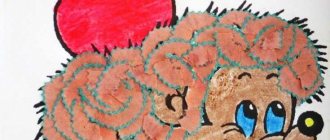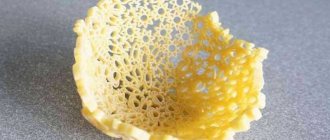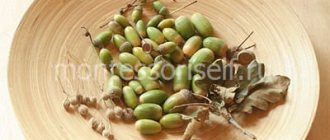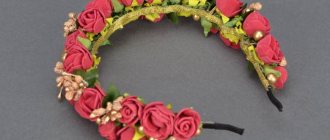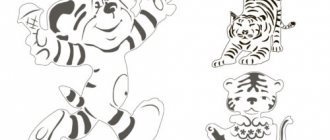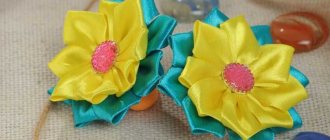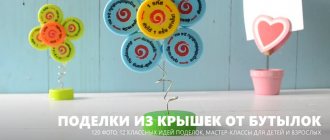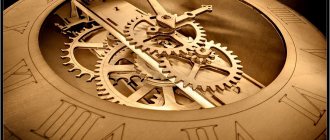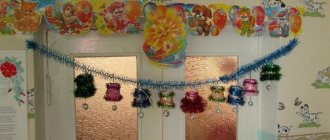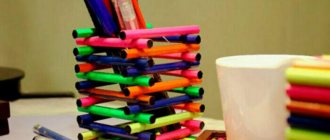Origami pencil made from paper is usually used as a bookmark for textbooks or as a decoration for school-themed cards. But these are far from all the functions of an easy-to-manufacture and creative model. For example, a large origami pencil can easily be turned into stylish packaging. There can be anything inside: from sweets to a small gadget.
Craft “Paper Pencil”
The craft can be done in one evening if an adult helps the child. It is noteworthy that it is better to get down to business with children of preschool age, but aged 5 years and older. But even such a child will need the help of adults. Some of the features in making crafts include the following:
- You can make a simple pencil from paper - colored, special for printing, or cardboard, if the craft is required for long-term use.
- The size of the craft directly depends on the size of the sheets of paper.
- If colored paper is not available, you can use a landscape sheet that is pre-painted in the desired shade. This will be difficult to do in the future.
- If you use cardboard, you will get a high-quality and durable structure. It can be used as a pencil holder - an item for storing pencils and pens.
There are many possibilities on how to make a pencil with your own hands from paper; it is important to choose the most suitable one. Next, one of the options will be presented that requires a small number of actions, so even the smallest student can cope with the task.
Pencil bookmark: origami for children
A pencil bookmark is one of the easiest origami crafts for children. It is also a useful handmade item.
To work you will need:
- Single-sided colored paper. That is, on the one hand it is in a very different color, and on the other it is white;
- Glue stick, scissors.
Bookmark a pencil step by step
Prepare a rectangular piece of paper. The size depends on how big the bookmark you need. But the most acceptable option is the length of the strip - 21 cm, and the width - 8.5 - 9 cm.
What materials and tools are needed for the job?
To make a craft yourself, you can use a certain set of tools. For the planned option, you will need to prepare the following details:
- colored cardboard - used as needed;
- colored paper;
- White paper;
- scissors;
- a simple pencil;
- ruler;
- glue stick;
- felt-tip pens or colored pencils, you can use special “live” eyes.
From the assembled parts you will get the pencil shown in the photo. It can be partially changed as needed.
Children should not be left unattended with scissors, pencils and pens. With kids, you need to cut out the parts together to prevent cutting.
What kind of wood is used?
A classic pencil is made of wood, and its quality determines how comfortable the product will be to use. Not just any wood will do. Previously, plants from the juniper genus were used, mainly red or Virginia cedar. But this raw material is very expensive, so American and European manufacturers switched to California cedar. Nowadays they also use linden, alder, and Siberian cedar. There are a lot of linden and alder growing in our country, so it is profitable to use them.
Alder is not very strong, but it has uniform fibers and no knots. Linden fully complies with all standards; both cheap and expensive products are made from it. It has optimal density and holds the lead inside well. Cedar is also used, but in our country it is not healthy young trees that are used for this purpose, but only those that have already stopped producing nuts.
Algorithm of action when creating
The presented craft becomes interesting if the algorithm of actions in the work is first studied. To do this, a detailed master class is presented that must be followed unconditionally.
Cut out A4 sheet
You need to take A4 cardboard or a similar sheet of paper. The workpiece must be used correctly in the future. For example, if you fold a sheet of paper placed crosswise, you will get a large pencil, but of small height. If you use a sheet with longitudinal folding, you will get a narrow but long pencil.
It is important to take into account the additional length of the cone. This is another 5-8 cm, which also depends on the size of the sheet used in the future. Therefore, if there is a need for this, you should make the correct markings and cut out the sheet.
Fold in half
This action will help in the future to correctly line the sheet for subsequent folding. This creates the center of the workpiece.
Draw fold lines
The pencil has 6 edges in total, so you need 5 stripes for ruling. One stroke is one angle combining 2 faces of equal size. Therefore, from the center it is necessary to make 2 lines on the wrong side for subsequent bending of the part. The distance is calculated taking into account leaving a small gap at the edges. This is necessary for subsequent gluing of the part.
You can not provide for this and make a 5-hedron. For a child making a pencil on his own, this will be much easier.
Sheet fold
To make even folds - not only along the line, but also in width, you need to use a ruler. It is placed along the line, after which the part is folded. This is how a pencil is formed.
The fold lines must be clear, since during subsequent gluing they will acquire blurry contours. If a preschool child is involved in the preparation, his fine motor skills are poorly developed, and it will be difficult for him to make a clear outline. Parents must help the baby.
Glue
The technique of making a pencil requires gluing one edge or an additional indent. To do this, the outer strip is smeared with glue and the part is glued together, forming a circle. You can make a 5-sided pencil or a 6-sided one, but only in this case apply glue to the additional indentation and glue it together.
Round off the required parts
After the “tube” is made, it is necessary to round off its edges. To do this, cuts are made on both sides along the fold no more than 2 cm in length.
The lower part of the “tube” is bent inward and all parts are glued together, overlapping them on top of each other.
This creates the bottom of the finished pencil.
The upper part is treated in the same way, only the cut elements are folded outward. A cone will be glued to them in the future.
Cone Formation
To make a cone, you need to take white cardboard or a standard sheet of paper. Draw a circle on it using a compass and divide the resulting area of the circle into 3 parts. If the correct division into equal parts does not work out, you can use the obtained parts, since this is not so important. It is important to draw “petals” along the arc on one of the selected parts of the circle.
The resulting “petals” are folded upward so that the workpiece can later take the desired shape on a pencil.
- Secrets of builders: working with couplings
DIY New Year's crafts - 9 best options
- Crafts from stones for the little ones - learning colors
The cone is wrapped in a circle and glued together, applying glue to one of the straight sides.
Then the blank is glued to the pencil - it is better to glue the “petals” to the previously bent parts.
Make a second cone from the colored paper or cardboard used to make the 5-sided or 6-sided base.
It is also folded into a bag and glued to a white cone on top.
The result is a finished pencil. You can make several crafts in the same way. If there is a need or desire to use it as a pencil holder, the white cone is not glued to the base.
- DIY helicopter craft
- DIY crafts from scrap materials
- DIY sweet crafts
Apply decorative elements
Decorative elements are applied in accordance with personal preferences and wishes, then the finished craft will be interesting. The product should not be piled up if it will be used in the future for active child play. If the pencil was made just as another craft, add live eyes and other additional things.
You can make an additional craft to go with the pencil as a bookmark. Only in this case will it be necessary to build a 6-tigahedron. Then it can be folded into a flat part without losing its constituent elements.
Video master class
School supplies decor: how to decorate school notebooks
You can decorate your school notebook with a fabric cover. Among the advantages of such covers: they are pleasant to the touch, you can make additional pockets both inside and outside, a variety of textures and patterns and, of course, simple execution techniques. This notebook can be used in the summer as a notepad or personal diary.
Embroidery on a notebook. It sounds strange, but it looks very beautiful and unusual. This decor is suitable for notebooks with plain and soft cardboard covers.
Stamps and drawings with paints can be made not only in a sketchbook, but also on the covers of notebooks, in order to decorate these same school notebooks in this way. Try it and you will like it!
Decorative adhesive tape is also perfect for decorating school notebooks, folders, book covers and albums. Thin strips of tape can be glued straight or diagonally, creating your own special pattern.
You can decorate an ordinary notebook with a photo collage of your favorite photos or pictures for a summer mood. Follow the link for a complete master class on how to decorate the cover of a notebook with a photo collage.
Girls will especially love this idea for decorating their school supplies. The openwork decor for the notebook cover was created for romantic schoolgirls.
Tips and tricks
Making any paper craft requires following the rules and sequence of actions. In this case, there are several tips:
- with children it is recommended to use only a glue stick, which gives more accurate work than PVA glue;
- the scissors that you take for work should be chosen from the “for children” category - they are less sharp, but sufficient to cut out the workpiece for the craft;
- the use of cardboard requires the mandatory participation of adults, since a child of any age will not be able to make a clear fold;
- in making a blank for a cone, it is not necessary to use a compass to draw a circle - you can take any round object and trace it along the contour;
- gluing the individual lower parts into the “bottom” must be done carefully and in sequence - the parts are glued in order;
- A child may have problems gluing the cone, so it is better to help adults in making the craft.
The pencil craft goes well with a self-made eraser, pen, book and other stationery items. All of them can be done in subsequent evenings.
Children's ideas
Crafts made from colored pencils are a great option for children who are bored with counting or developing motor skills with simple objects.
Wooden sticks are so nice to hold in little hands, they are bright and warm to the touch. It is not for nothing that parents choose pencils as a counting material or a sorting object for learning colors.
Moreover, repeated use makes it also budget-friendly, which is also important for mothers on maternity leave.
Paper pencil craft
Gifts are one of the indispensable attributes of any children's party. And if it’s a school holiday, then to lift the mood, a small souvenir should be given to each student in the class. At the same time, you always want the surprise to have a practical application, but at the same time look festive. One such surprise option could be a pencil craft made from cardboard.
The good thing about a pencil craft for a children's party is that it corresponds to the school theme, has many options for filling, and does not require much time or effort.
Pencils
What you need to prepare in advance:
- a ready-made cardboard tube (the base of disposable towels, toilet paper, culinary foil, tracing paper) or cardboard thick enough for its manufacture;
- thinner cardboard or paper for the tip;
- bright packaging (wrapping) paper;
- beautiful adhesive tape, electrical tape or colored tape;
- black felt-tip pen;
- glue;
- scissors;
- gift "stuffing".
Craft materials
- Crafts for Easter from scrap materials
- DIY strawberry craft
- DIY wire crafts: top 100 ideas for inspiration
As a filling for a gift, you can use: various stationery (pencils, pens, felt-tip pens, erasers, sharpeners, etc.), hair bands, beautiful handkerchiefs, sweets, small toys and keychains - anything you like.
But first you need to make a case.
To do this, cut out a segment of a circle from paper or cardboard. You can divide one circle into three parts, each of which can be used in your work.
We glue the straight edges of this segment, thereby obtaining a cone.
Cone Glue the cone
The cone should easily fit onto a pre-prepared cardboard cylinder. If there is no cylinder, we make one ourselves by gluing a tube of thick cardboard, choosing its diameter to match the size of the cone.
We put the cone on the cylinder and glue it.
We fix the cone
Base: cardboard tube
We paint the tip of the cone with black (or any other) color.
Black tip
We wrap the cylinder with wrapping paper and glue it.
We put the prepared “stuffing” inside.
"Filling"
Cut out a fairly large circle from thin paper. We make cuts around its circumference. We wrap it around the free edge of the cylinder. Secure with silver adhesive tape. It should look like an eraser at the end of a pencil.
We fix the “elastic band”
In general, the pencil craft made from paper and cardboard is ready. If desired, you can decorate it with ribbons, decorative elements, or come up with interesting packaging for such pencils.
The pencil is ready
Gift pencils
Since even younger children can make a pencil with their own hands, you can use this idea not only at school, but also to organize a party in kindergarten.
Crafts from shavings
You can create many beautiful things from pencils, however, sometimes it is not necessary to use a base, because the material is even ordinary shavings. Many people throw away wood shavings without even realizing that they can be used to create many beautiful ideas.
As an example, we will conduct a master class on creating an application from shavings. In this case, it can not be specially made, but collected in a separate container during the use of the office.
Materials:
- shavings;
- PVA glue;
- tassel
- a sheet of paper or a finished sketch.
Manufacturing:
- We print out the desired shape on a piece of paper, which we will add later. In our case, we decided to print a girl for whom we will create a beautiful dress.
- We apply PVA glue with a brush to those places where we will later fix our shavings.
Using this principle, create various applications, for example: animals, flowers and other objects.
The shavings can also be twisted to create three-dimensional shapes. Wrap a few shavings in this way, then glue them along the contour, resulting in a lush peony. The advantage of this method is that you can then supplement your application with different colors using paints or felt-tip pens.
This method of creating crafts from pencil shavings significantly expands the field for a child’s imagination, develops his thinking and hand motor skills, and in addition, instills perseverance in him, which will happen, by the way, if the child grows up to be very active.
Materials for work:
- Colored paper, but better not very thick cardboard. A paper pencil can be of any color, but still the eraser looks better pink, the lead – black or gray, near the lead – a beige area;
- Paper towel roll. If this is not observed, such a roll can be made from any cardboard;
- Silver material. It could be paper, adhesive tape, foil, or even a candy wrapper;
- Scotch tape, if you plan to place objects inside the pencil;
- Scissors, glue stick, simple pencil.
How to make a pencil out of paper with your own hands?
Making an eraser
Trace your roll on pink cardboard or paper, just not too close, but a couple of millimeters more.
Around this small circle, draw a slightly larger circle. No special effort is required, it may not be very even, the edges will still bend.
Cut along the contour of a large circle, cut a strip from this pink paper, approximately 5.5-6 cm wide. The length should correspond to the circumference of your roll.
Make slits on the outer large circle, extending to the small circle, and fold them over.
Apply glue to the bent parts or to the roll and glue this part.
Glue the prepared pink strip of paper on top. The eraser is ready.
DIY paper pencil - color choice
The next stage of work is the middle part of the pencil.
But, it should be noted that if you need a complete pencil, you do not plan to put anything inside, then before pasting the entire pencil with the desired color, you first need to make the area of the lead. And then stick the paper on top of the middle part of the pencil.
If you plan to place something in a craft, measure the required dimensions and cut out the required part from colored paper.
Glue the paper using a glue stick to the roll.
Next you need to make a silver eraser holder. To do this, cut a strip from silver paper, wrapper or foil and glue it in the area where the paper meets the eraser. If you have a silver adhesive plaster, the work is greatly simplified.
Making the stylus area
Cut out a circle from beige cardboard, approximately its size can be no more than half an A4 sheet. You will also need a circle half the size of black or dark gray paper.
If you do not plan to open the pencil, the beige circle should be larger, taking into account the folds that will later need to be glued to the roll. That is, you first need to make a large cone, measure the required size for the area near the stylus, and cut the rest of the part, as in working with an eraser, and glue it.
In this case, this size of circles is enough.
Bend the circle in half, find the middle and cut along the fold to this middle.
Make a cone, carefully matching it with the size of the roll; the edges should completely match or be just a little larger, a couple of millimeters.
Make a black cone in the same way, after trying it on a beige one.
Apply glue to the tip of the beige cone and glue the lead.
Fill the middle of the pencil with candy or small office supplies (eraser, sharpener, real pencils, pens, etc.). Glue a conical piece with a stylus onto small pieces of tape on top in two places.
This is how you can make a pencil out of paper with your own hands. Children will also love making this pencil maker, because giant school supplies are fun and interesting.
History of the pencil
In the 16th century, the pencil evolved and graphite began to be used during this period. It proved to be very popular, so much so that the English rulers had to prohibit the mining of graphite for more than a month and a half each year. A ban was also imposed on the export of valuable raw materials from the country. We are talking about a deposit in Cumberland, the only one in all of Europe.
European countries were filled with smuggled graphite, quietly exported from England. The prices for it were so high that only very wealthy people could afford such a writing medium. Soon the French presented their answer; they invented the so-called Parisian pencil, inside of which there was white clay colored with soot. They painted very softly. Initially, these were just graphite sticks, suitable only for drawing. Then an outer shell appeared, and they began to be used for writing.
Mass production of pencils began in Nuremberg, Germany. The rod was a mixture of sulfur, graphite and glue. Such products were of lower quality than graphite ones; the rod was non-uniform and sometimes was interrupted along the length of the product. But they have become cheaper and more accessible.
The story took another turn at the end of the 18th century, when the Frenchman Nicolas Jacques Comte came up with the idea of making a mixture of graphite, clay, soot and starch with water, forming products from it and then firing them. By changing the proportions, it was possible to obtain different hardness: when graphite predominated, the products became darker and softer; if the amount of clay was increased, then they became lighter and harder. Nowadays, it is impossible to give one answer to the question of what a pencil lead is made of. There are more than twenty manufacturing technologies.
M. Lomonosov contributed to the appearance and development of the pencil in our country. He opened production in the Arkhangelsk region and set a standard for each master - 144 pieces per day.
This unit is called gross, and it is still used in the modern world.
The first mechanical pencil was created by an American named A. Cross. This was at the end of the 19th century. But such an invention was patented by a man named Gindelman, this happened in Russia.
This item received a hexagonal shape for a reason. The round ones kept rolling off the table, it was inconvenient. After the creation of plastic, it began to be used instead of wood, but many still prefer wooden shells.
Master class “Volume pencil made of colored cardboard”
The master class is intended for preschool teachers. These pencils can be used to decorate group rooms.
Tools and materials for work:
— a sheet of colored cardboard, A4 format;
- a sheet of white coated cardboard;
- narrow double-sided tape or glue gun;
- dry pastel or gouache in beige and light brown colors (for tinting white cardboard to look like wood).
Step-by-step manufacturing instructions:
1. On a sheet of colored cardboard, draw a pencil pattern and cut it out (don’t forget about the allowances).
2. In order for the edges to bend well, you need to go over all the edges with the sharp edge of the scissors. Next, bend as shown in the picture.
3. We begin gluing the pencil from the tip (part “1” is glued to part “*”).
4. Glue the point to the pencil and use double-sided tape or a glue gun to glue the pencil.
5. Cut out two parts from white coated cardboard (don’t forget to leave allowances at the base of the pencil). To better bend the edges, we also use scissors.
6. Now you need to tint the white parts to look like wood. You can use gouache, I tinted it with dry pastels. The crushed pastel (you can mix several colors) should be applied to the cardboard with the help of a damp cloth, in the direction from the center to the edge.
7. Glue the parts together (just like a pencil point - glue part “1” onto part “*”)
8. Assemble the pencil, glue the base at the bottom and glue the “skirt” to the tip of the pencil.
9. These are such wonderful pencils!
The job application can be downloaded here.
Comments
The use of didactic and role-playing games in the environmental education of preschool children
The use of didactic and role-playing games in the environmental education of preschool children Modern culture, uniting humanity, is based on common values, one of which is.
Scenario for the holiday “Golden Autumn” in the senior group of kindergarten
Scenario for the “Golden Autumn” holiday in the senior group of kindergarten Characters Adults: Presenter, Garden Scarecrow. Children: carrots, garlic, beets, cucumber, cabbage, tomato, Postman.
"Winter meets Spring"
“Winter meets Spring” (Children enter the hall to the music.) Presenter: What kind of holiday? What kind of holiday? Haven't you heard of him? There will be a holiday here.
Direct educational activities in the 2nd junior group “Where are we...
Direct educational activities in the 2nd junior group “Where we live” Program content: Mastering the action of substitution, construction and use of a model. Development of ideas about the street and.
Summary of the integrated educational activity “Visiting the birds in the winter park”
Abstract of the integrated educational activity “Visiting the birds in the winter park” (For children of senior preschool age) Purpose: Formation of ideas about wintering birds, careful.
Summary of organized educational activities in English in the preparatory group...
Summary of organized educational activities in English in the preparatory group “Bob the Puppy!” Goal: to develop children's communicative competence through English fairy tales. Tasks: - educate.
Comments
- Tatiana
In blogs
Outdoor games for senior preschool age
P/i “Owl” Goal: learn to stand still for a while, listen carefully. How to play: The players sit freely on the court. “Owl” sits or stands to the side (“in the hollow”). The teacher says: “The day comes - everything comes to life.” All players move freely around the court, performing various tasks.
Joint activities with children, NGO “Khudozh-Aesthetic. Development (sculpting)
Topic: “Sweet Strawberry” Purpose: creating a social situation of development in the process of productive activity. Progress of the lesson: The teacher asks a riddle: Guess what we are talking about now? We plant a bush in the garden in the spring, loosen it, water it, soon the berries will turn, for the green ones will come. And then they.
GCD in the mixed age group “We play lotto”
Outline of direct educational activities with preschoolers in a mixed-age group (4-6 years old) Topic: “We play lotto” Educational area: cognitive development, speech development, social and communicative development. Objectives: Continue to develop the ability to solve riddles. Practice the ability to correlate number and quantity. Strengthen your knowledge of numbers.
Joint activity with children, NGO “Poznanie” Topic: Quiz “My favorite berry”
Goal: Creation of a social development situation in the process of cognitive, research and gaming activities. Task 1. 1. Name the birds that fly to warm regions in the fall? (Swallows, cranes, starlings) 2. What parts do mushrooms consist of? (From the stem, cap, mycelium) 3. The bear eats which berries he likes.
Origami pencil
Origami pencil made from paper is usually used as a bookmark for textbooks or as a decoration for school-themed cards. But these are far from all the functions of an easy-to-manufacture and creative model. For example, a large origami pencil can easily be turned into stylish packaging. There can be anything inside: from sweets to a small gadget.
Original alarm clock and wall clock
Watches are companions of human life. They are present in every home, but not all of them look good. To improve the appearance, the alarm clock and wall chronometer can be decorated with colored or single-color pencils. The edges of the sticks can be oval, multi-colored, decorated with sparkles, and this gives enormous scope for imagination.
To create the base for the alarm clock you will need about 24 pencils, for the wall version - 80 pieces. You will also need:
- jigsaw;
- clock mechanism, hands;
- sharpener;
- CD;
- glue gun
The pencils are glued together. A hole for the hands is cut out in the central part of the alarm clock or clock. The clock mechanism is also located there - it, like the hands, should be placed on glue. A pencil cut at an angle of 45 degrees can act as a support for the alarm clock.
To create a wall clock you will need a CD. It will be used as a dial; there is already a hole for the hands in the disk. You can glue pencils to create a clock in a circle and vertically or horizontally; the arrangement order can be chaotic.
Three models based on a square
There are several designs for origami pencils. They have differences in the assembly algorithm, but the results are similar. All schemes are available to children from 7 to 8 years old. For any of the proposed models, you will need a square of 15x15 cm. One side of the paper sheet must be white.
Step-by-step instruction:
- Place the square sheet with the white side up.
- Fold in half from right to left.
- We bend the corner to the opposite edge.
- We fold the second part with an offset. This is the tip of our pencil.
- Bend the top edge back.
- Turn the workpiece over.
- Bend the top corner.
The pencil is almost ready. You can stop at this stage, but if you want to make the model more elegant, it is better to add two more simple operations.
- Fold the right side as shown in the picture.
- We repeat the action symmetrically on the left.
- Remove the outer edges to align the pencil.
- Turn the product over to the front side.
Thanks to its compact size, this model is especially convenient for composing complex compositions:
Option No. 2
An origami pencil according to the following scheme can be made both miniature and life-size. The second option is suitable for decorations for September 1 or Knowledge Day.
Step-by-step instruction:
- Fold the square in half and open it.
- We lower the top edge and raise the bottom, thus dividing the sheet into three parts.
- Open the first layer in the direction of the arrow.
- Fold the top edge along the dotted line.
- Turn the product over.
- Bend both corners along the dotted line.
- Fold the sides towards the middle.
- Turn the workpiece over.
- The pencil is complete.
You can vary the width of the model by additionally bending the sides.
Option #3
The third model is convenient as gift packaging. Only the bottom edge will need to be tucked so that the contents of the package do not fall out.
Step-by-step instruction:
- We divide the square sheet in half by folding it in two directions. Let's expand.
- Fold the top half in half again.
- We divide in half.
- Fold the top edge to the last fold line.
- We “close” the side flaps towards the center.
- We lower the corners.
- We make folds along the dotted lines.
- Bend the upper part along the marked lines.
Decor options using colored origami pencils are amazing in their diversity. Compositions with them can be complemented with a bouquet using the origami technique or autumn leaves:
External painting
The color of the shell can be any; the coloring is also subject to a number of requirements. Pre-treatment is required, pencils on a conveyor pass through a priming unit. To ensure even coverage, they are turned over before each new coat is applied.
Good manufacturers use only food coloring for coloring, since children, and many adults, love to chew pencils. Nitrocellulose gloss varnish is used as a top coat. The number of layers of paint and varnish depends on the original color of the wood and the result that the manufacturer wants to achieve. The darker the wood, the more layers will be required. Manufacturers have to choose between color and gloss; if more layers of pigment are applied, then there will be fewer layers of varnish.
All that remains is to finish the ends; they are dipped several times in a special composition; this is done not manually, but using equipment. Almost finished pencils are installed vertically on the platform, and the machine begins to dip them into the composition.
Pencil holder
Paper pencils can, among other things, serve as a stand for real ones. It will only be necessary to slightly change the assembly order of model No. 2. Among all the options for origami pencils, this one is the most popular due to its simplicity and originality.
Step-by-step instruction:
- We divide a square of thick paper 21x21 cm into three parts.
- Bend the top edge 1 cm.
- We lower the right and left corners to the central axis.
- Fold the workpiece in half into a “mountain”.
- We repeat steps 1 – 4 and assemble a second similar workpiece.
- We bend the sides along the dotted line and connect them together.
- We mark the second square with sides 21x21 cm, as shown in the figure.
- We unfold according to the arrows.
- We fold the corners towards the center. And then we lift it vertically up.
- Attach the bottom to the walls. Glue it together.
- Now the pencil holder can be used for its intended purpose.
Video tutorial on how to create a hand-made postcard with origami pencils:
Equipment Features
To process each of the components in the composition, a separate type of equipment is required. For example, mills and crushers are needed to prepare clay. To mix the dough that will become the core, you need screw presses with rollers at three different clearances. A die with holes performs the same function.
Future simple pencils are dried in special cabinets, where they rotate continuously for 16 hours. After drying, the humidity should be no higher than 0.5%. Colored pencils are not dried because they contain fillers and dyes. The machine then cuts the pencils to the required length.
